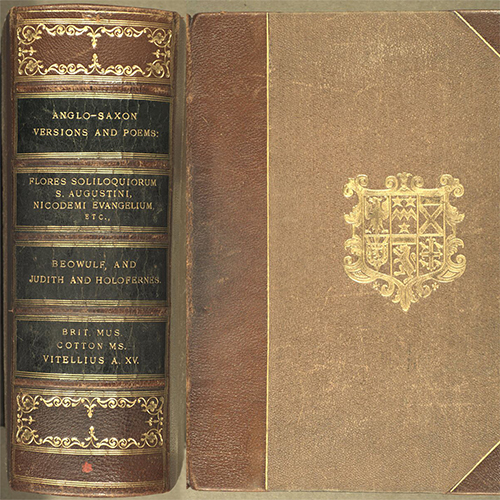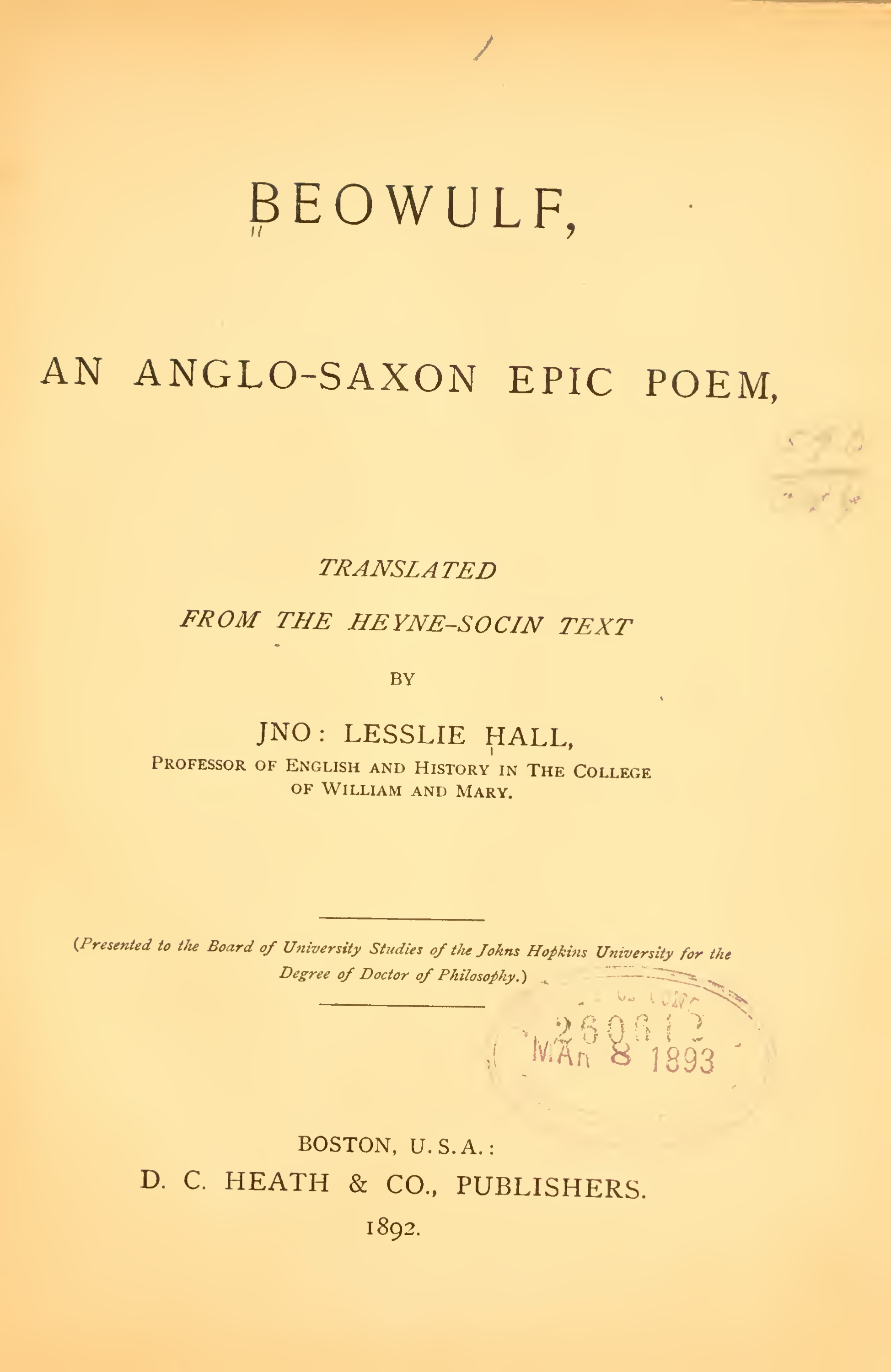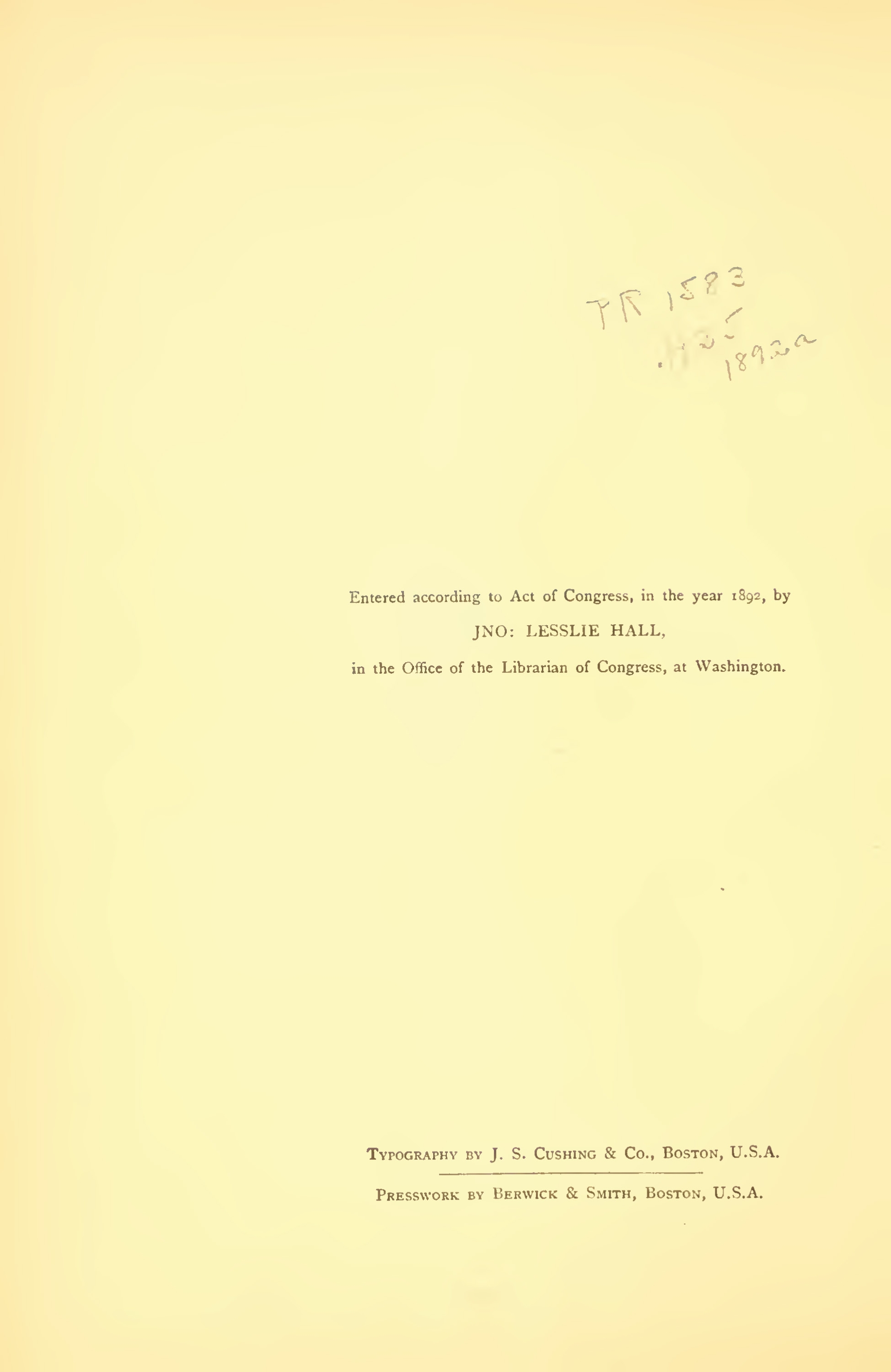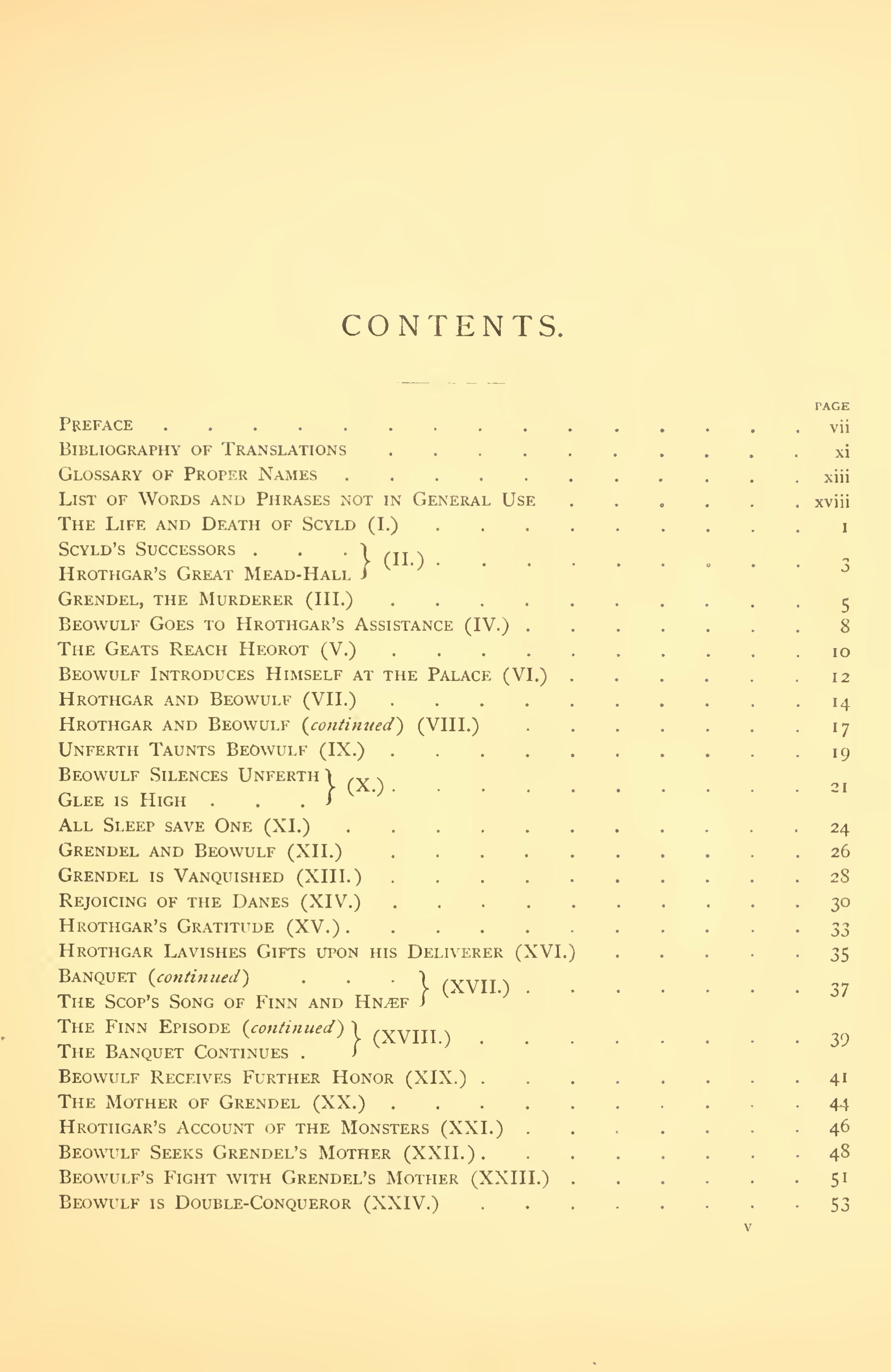About
Beowulf is an Anglo-Saxon epic poem from ca. 1000 C.E. It details the story of Beowulf, the hero who would kill the Grendel, the monster who terrorized the local people. Beowulf is considered one of the oldest examples of epic poetry in the Old English dialect. Its contents come from one remaining manuscript known as the Nowell Codex, or Cotton MS Vitellius A.XV. The 3,812 line poem, translated by J.L. Hall in 1892, is a popular version and includes a glossary, descriptions, as well as helpful footnotes for readers unfamiliar with the myth.
Source: OMNIKA
King Hrothgar, the ruler of the Danes, is troubled by the rampages of a demon named Grendel. Every night, Grendel attacks King Hrothgar's wealthy mead-hall, Heorot, killing Danish warriors and sometimes even eating them. Hrothgar was a great warrior in his time, but now he's an old king and can't seem to protect his people. Fortunately, a young Geat warrior named Beowulf travels to Heorot Hall from his own lands overseas to lend a helping hand – literally.
Source: Author or Publisher
expand_more Read more Read less
Access
Read for free
External sources
Primary
Myth
Beowulf, the hero, helps the Danes by killing the man-eating monster named Grendel, and his mother. Afterwards, Beowulf returns home and becomes the king of the Geats, ruling until his heroic death over fifty years later. In his final battle, he slays a dragon. The poem ends by honoring the greatness of Beowulf.
Belief system
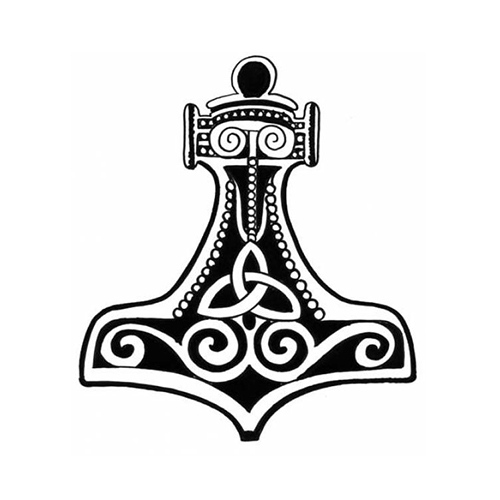
Norse Paganism refers to the beliefs and traditions of people from Scandinavia: Iceland, Norway, Sweden, and Denmark.
Deity
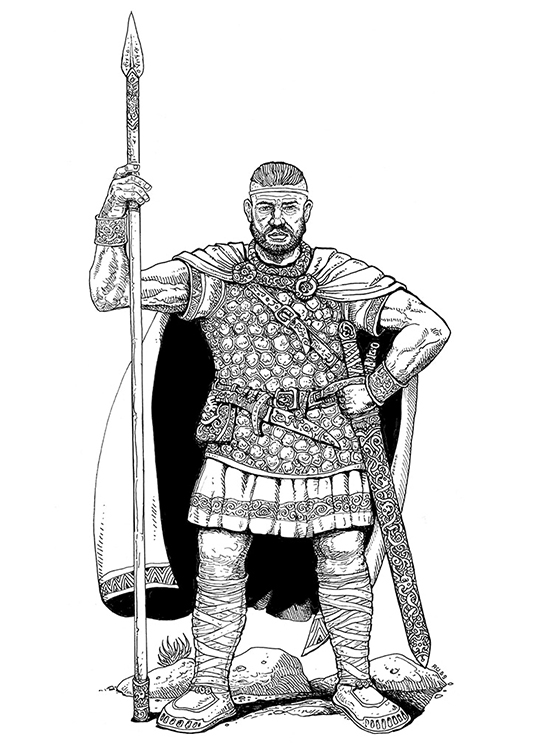
While Beowulf was not a formal deity in the Norse pantheon, he was a mythical hero who had unusual skills and abilities.
Myths cited
It looks like only the main myth was referenced in this work.
Belief systems cited
It looks like only the main belief system was referenced in this work.
Artifacts cited
Contributor
Cite this work
ChicagoHall, John L. Beowulf: An Anglo-Saxon Epic Poem, Translated From the Heyne-Socin Text by J.L. Hall. Boston, MA: D.C. Heath & Co, 1892.
